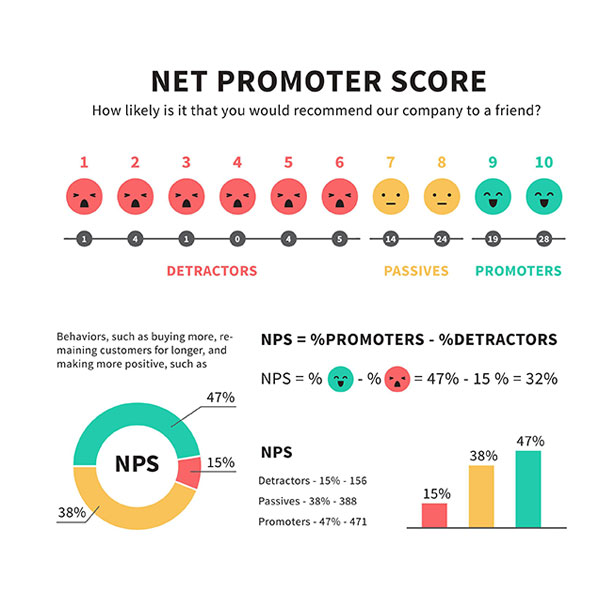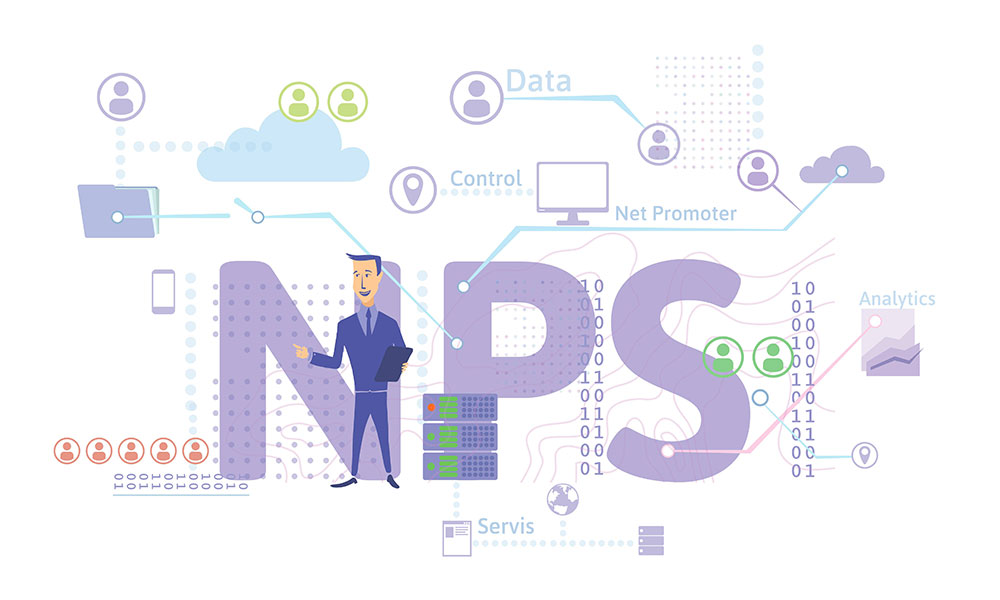How often do you ask your customers how likely they are to recommend your products or services? You should be doing it regularly because the answers can provide you with invaluable customer feedback. One of the best ways to gauge customer satisfaction is by using a Net Promoter Score (NPS) survey and software. NPS surveys have become an invaluable tool for businesses in recent years, allowing them to assess customer loyalty and identify areas where they need to improve. This blog post explores what an NPS survey is, why it’s important, and the different types of NPS software available on the market today. Read on to learn more about NPS surveys and software, and how they can help you gain valuable insights into customer loyalty.

What is Net Promoter Score?
Net Promoter Score (NPS) is a customer loyalty metric that measures how likely customers are to recommend your brand or product to others. It is calculated by asking customers to rate their experience on a scale of 0-10 and then subtracting the percentage of detractors from the percentage of promoters.
The Net Promoter Score has become one of the most popular customer satisfaction metrics because it is simple to calculate and provides valuable insights into customer behavior. NPS can be used to benchmark performance, track changes over time, and identify areas for improvement.
NPS software makes it easy to collect feedback and calculate NPS scores. The best NPS software platforms provide advanced features like data segmentation, real-time reporting, and automated follow-up emails.

How is Net Promoter Score Used?
Net Promoter Score (NPS) is used to measure customer satisfaction and loyalty. It is a metric that is based on the responses to a single question: How likely are you to recommend our company/product/service to a friend or colleague? NPS can be used to track customer satisfaction over time and compare it across different channels or touchpoints. Additionally, NPS can be used to identify promoters (customers who are highly satisfied and likely to recommend a company/product/service to others), passives (customers who are satisfied but not particularly loyal or enthusiastic), and detractors (customers who are unhappy with their experience and unlikely to recommend the company/product/service).
Advantages and Disadvantages of Net Promoter Score:
Net Promoter Score (NPS) is a customer loyalty metric that measures how likely customers are to recommend your product or service to others.
NPS can be a valuable tool for measuring customer satisfaction and identifying areas for improvement. However, there are some potential drawbacks to using NPS that you should be aware of before implementing it in your business.
Advantages of Net Promoter Score:
- NPS provides a simple, easy-to-understand metric for measuring customer satisfaction.
- NPS can help identify areas of your business that need improvement.
- NPS can be used to track changes in customer satisfaction over time.
- NPS can be used to benchmark your company against others in your industry.
- Some research has shown that companies with high NPS scores tend to outperform their competitors financially.
How to Implement Net Promoter Score:
Net Promoter Score (NPS) is a customer loyalty metric that measures customer satisfaction and can be used to predict business growth. NPS survey software makes it easy to collect and track NPS data.
To implement an NPS survey, businesses first need to decide what type of survey they want to use: email, web, or mobile. Email surveys are the most common type of NPS survey, but web and mobile surveys are also popular options. Once the survey format is chosen, businesses need to decide how often they want to send out surveys (monthly, quarterly, etc.).
Next, businesses need to create their NPS questionnaire. The questionnaire should be short and simple, with only one question: How likely are you to recommend [company] to a friend or colleague? respondents answer this question on a scale of 0-10, with 0 being not at all likely and 10 being extremely likely.
After the questionnaire is created, businesses will need to choose an NPS survey software platform. There are many different platforms available, so it is important to do some research before making a decision. Once a platform is selected, businesses can start collecting NPS data from their customers.
NPS data can be used in many different ways. One way is to segment customers based on their scores.
Best Practices for Using Net Promoter Score:
There are several best practices to follow when using Net Promoter Score surveys and software to ensure that you are getting the most accurate and actionable feedback possible. Here are a few tips:
- Use an open-ended question format: Net Promoter Score surveys should always begin with an open-ended question that asks respondents to rate their level of satisfaction on a scale of 0-10. This allows you to get a more accurate gauge of overall sentiment before diving into specific questions about your product or service.
- Ask follow-up questions: Once you have the respondent’s overall score, it’s important to ask follow-up questions to get more detailed feedback. These can include asking why they gave the score they did, what their biggest pain points are, and what would make them promoters or detractors in the future.
- Use multiple channels: To reach as many customers as possible, it’s important to use multiple channels to collect Net Promoter Score data. This includes online surveys, in-person interviews, focus groups, and even social media listening.
- Analyze the data: Once you have collected feedback from customers, it’s essential to take the time to analyze the data thoroughly. This means looking at not only the scores but also the comments and qualitative feedback to get a full picture of customer sentiment.
- Take action: The final step is to take action based on the feedback you’ve received.
In conclusion, Net Promoter Score Surveys and Software can be effective ways to measure customer satisfaction. It provides valuable insights into customer loyalty, as well as feedback on what areas need improvement to increase customer loyalty. By getting a better understanding of your customers and their experience with your products or services, you can make improvements that will result in higher levels of customer satisfaction and increased profits for your business.

